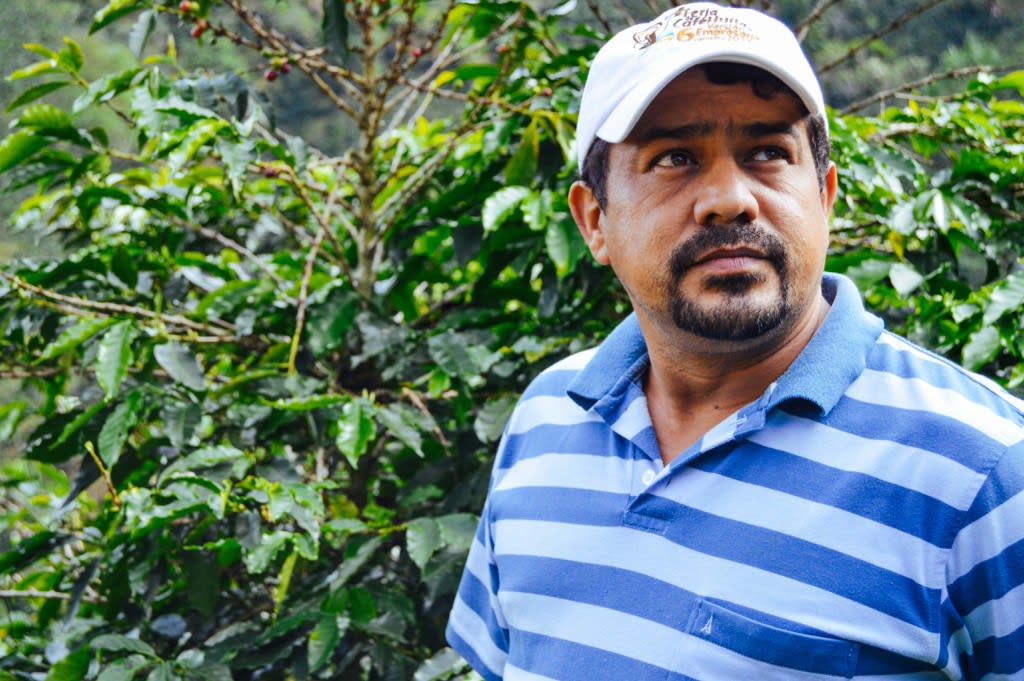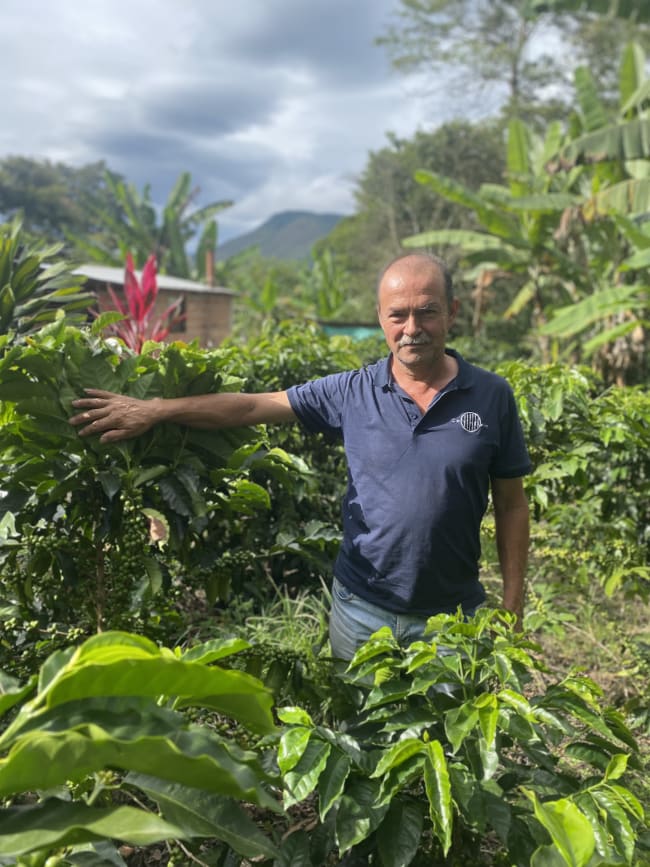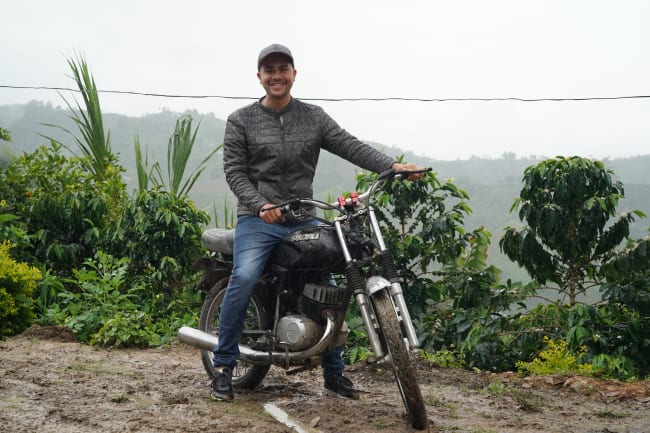Last month we asked you to give us your questions to put to the farmers we work with. And since our Head of Coffee, Will, and Pact Founder, Stephen, were heading to Brazil on our latest coffee-sourcing trip, we had the perfect Pact-fact gathering mission.
They’re back now and full of answers to your questions, which ranged from asking about farming techniques to what farmers like for dinner. Read on to find out more about the people producing that tasty cup of Pact you enjoy every day.
—–
So, the basics of running a coffee farm?
Coffee starts its life as the bean at the heart of a cherry, which grows on a shrub-like tree. In most countries the cherries are picked by hand, which is often a labor-intensive and difficult process. Brazil, however, is unusual because the landscape can be relatively flat and the coffee industry is quite developed so some of the farmers we met used mechanised processes to pick the cherries.
During each crop cycle, farmers use agronomists (agricultural experts) to determine the success of that year’s harvest. Over a couple of visits – once during flowering and then after the rainy season – they’ll check out the volume of cherries on the trees and the number that will ripen perfectly. Their keen eyes will work out if the coffee will grow to be speciality grade, like the coffees Pact buys.
What sustainable farming techniques are used?
We saw farmers using some very clever processes to help reduce the impact on the environment. These included:
Water preservation Processing coffee cherries can be very water-intensive, so many of the farmers make sure to re-use the water by treating it and then putting it through the process again.
Upcycling waste The flesh of the cherry (this is actually edible – it has a sort of peppery taste – but it isn’t something that’s used for cooking) has to be stripped off to reveal the beans. This waste is gathered together and reused as a fertiliser for young plants.
Biofuel
The papery ‘parchment’ layer around the beans is removed after drying and burned to produce energy.
Land write-off
This is the process of purposely setting aside sections of the farm as mini- nature reserves that attract all the bugs away from the coffee trees. They also serve the purpose of acting as a barometer of the health of the land. If
a reserve can be sustained, and animals live there, things are good.
Fruit trees
Mixing in different crops within the plantation can have a similar effect to land write off, and a lot of other bonuses you wouldn’t expect. For example bananas!
Despite all of the above, many of the coffee farmers we spoke to told us they were not actually certified organic. They said it wasn’t realistic for them to completely rule out the use of some pesticides. Coffee rust,, a fungus that attacks coffee plants, has been a terrible issue for farmers in recent years and without some sensible use of pesticides then their coffee trees would simply die.
Do you have any worries for the future of coffee farming?
Climate change is a serious concern for a lot of farmers. Drought, rising temperatures and unreliable weather mean their farms, which are currently situated at the perfect altitude and climate to grow coffee, might not have the right conditions in ten or 20 years time.
Also, because the price of coffee on the global commodity market is never stable, it can be a lottery as to what their coffee will be worth. Unfortunately, it’s the nature of the commodity market and it comes down to the way coffee is traded (and not the quality of their beans). The more speciality grade coffees they can grow, the more stability return buyers like Pact can offer.
…Oh and mentioning the Olympics didn’t go down well!
It’s a bit of a touchy subject due to the money being poured into it. Not that dissimilar to the UK pre-London 2012 then!
—–
What’s it like working with Pact?
How does Pact measure up as a buyer? Marcus Carvalho from Fazenda Chapada, who sells about 20% of his crop to Pact (a number that’s increasing each year), told us that Pact’s support in buying a cherry sorting machine is unique compared to his experiences with other buyers (you can read more about that in the blog post: ‘Marcus & His New Coffee Sorter’).
Other farmers working with Pact for the first time said they were very happy to be able to sell into the coffee market in Europe, and with a company that has the same values as them.
Sergio Mantovanni, of the Planalto farm (seen below with Stephen) told us: “ The difference to other buyers is that Pact focuses on paying the producer the real value for the product and they want to guarantee that the coffee they are buying was produced in a sustainable way and the fee that they’re paying for it will be repassed to the grower to be used to produce great coffees year by year. ”
Finally, what’s day-to-day life like?
Turns out a lot of farmers in Brazil like to use a type of filter to make their coffee – sometimes they improvise using cloth instead of paper filters. Espressos are popular, although in poorer areas there often isn’t the facilities to make coffee this way.
And to eat? As with many people across Latin America, rice and beans is a staple in their diet. In Brazil, Pé Do Porco is a special meal made with pork and is best washed down with a cold beer!
We also asked about taking visitors. They said ‘yes!’ – if you set it up in advance. It’s good to remember that coffee farms are busy workplaces, but everyone we met in Brazil was so friendly. They said it would be a great pleasure for them to welcome those who are buying and drinking their coffee to visit their farm.







